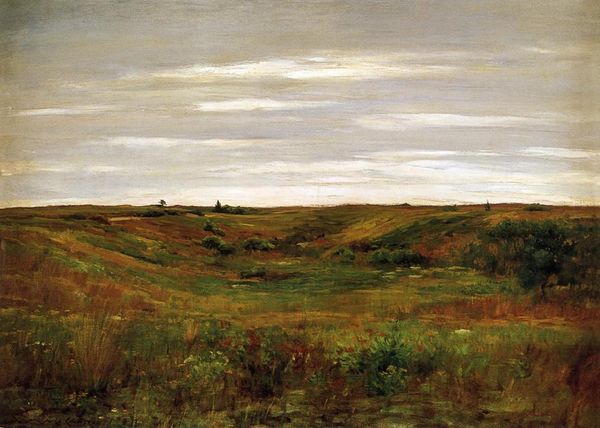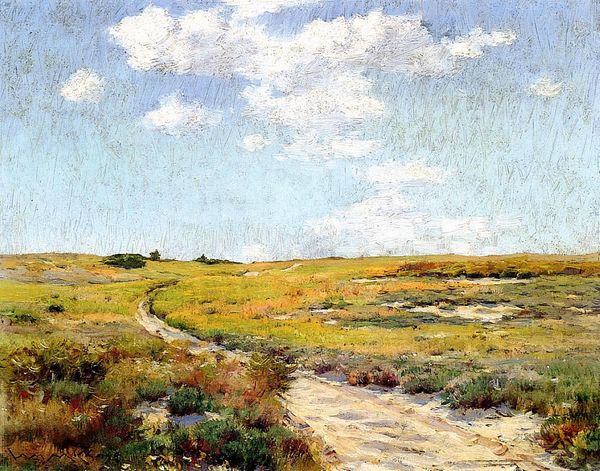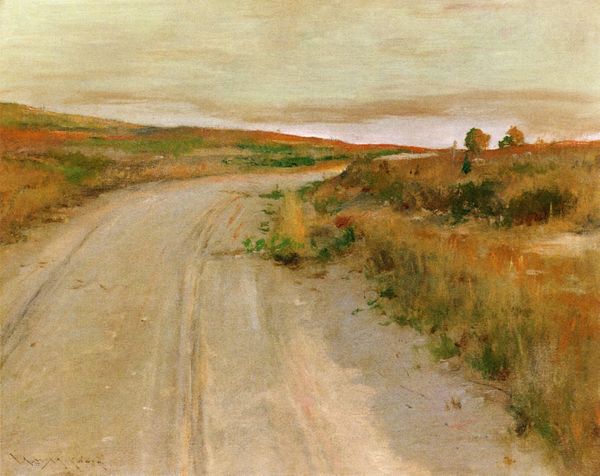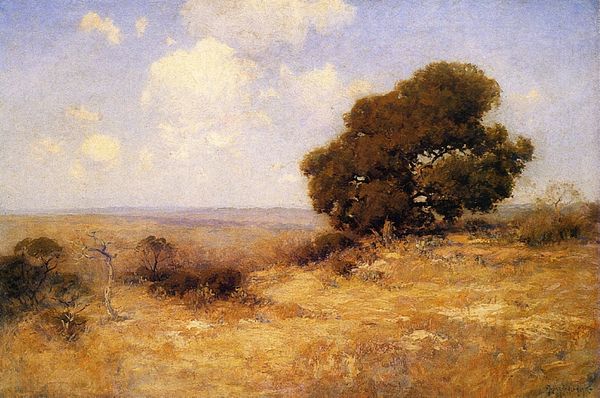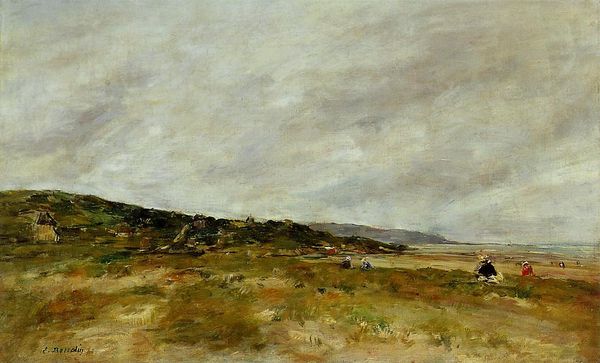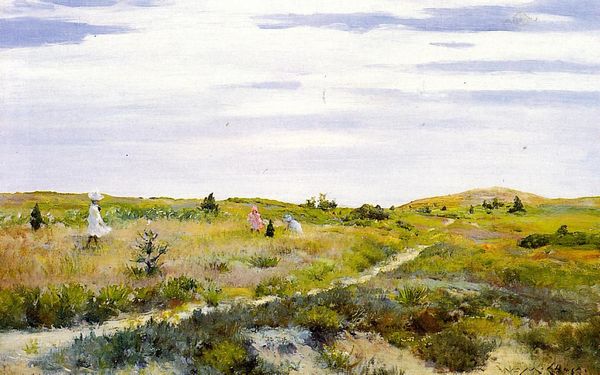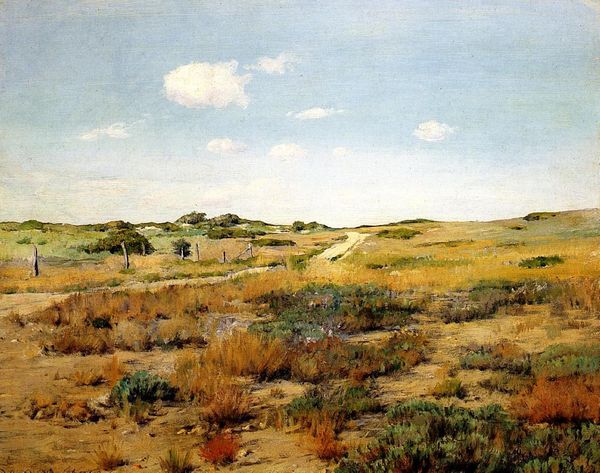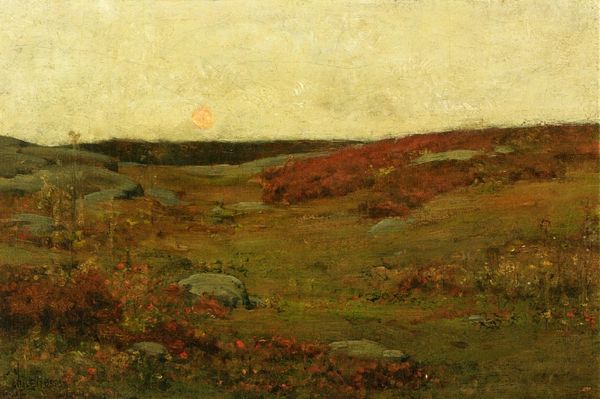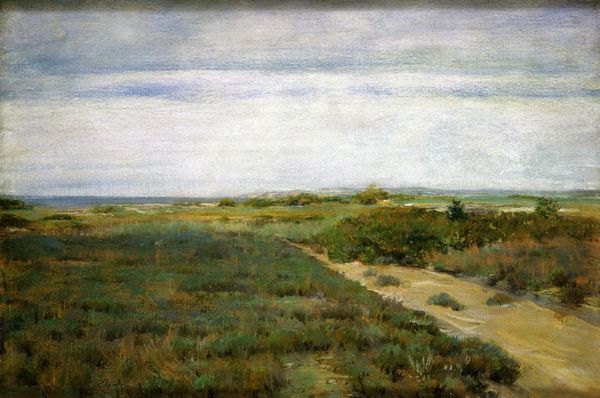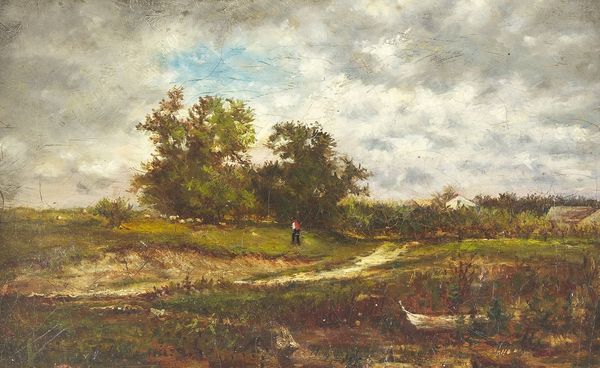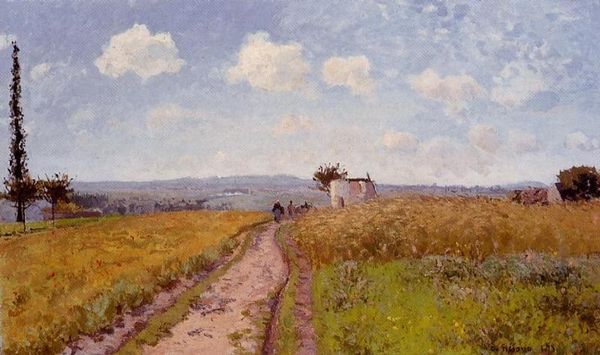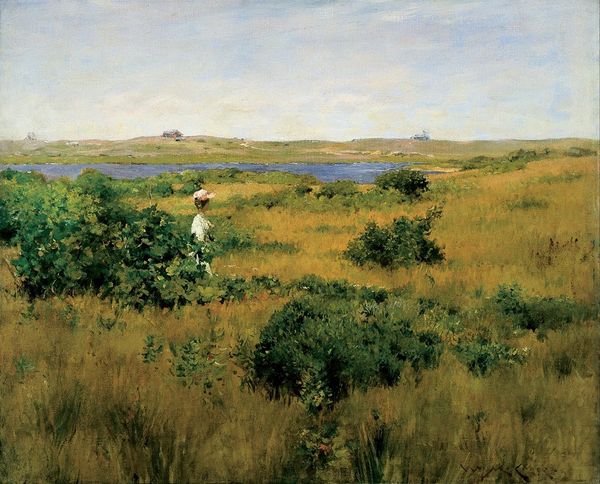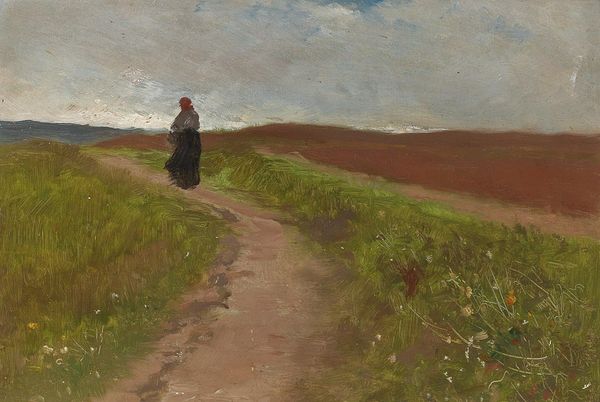
Dimensions: 88 x 101 cm
Copyright: Public domain
Editor: This is "Shinnecock Hills," or sometimes titled "Shinnecock Hills Autumn," an 1893 oil painting by William Merritt Chase. The way the light falls across the field gives the painting such a sense of expansive calm. How would you interpret this work within its historical context? Curator: The Shinnecock Hills were more than just a scenic location; they became a hub for artistic experimentation and social exchange. Chase established a summer school there, drawing students and artists alike. The area's burgeoning artistic community provided opportunities to display and sell works. The availability of inexpensive land also meant a potential to solidify his reputation through local exhibitions. It's worth asking ourselves how Chase contributed to creating and circulating an artistic identity linked to the Shinnecock landscape, especially considering the indigenous Shinnecock Nation who inhabited the area. Editor: That’s a very important point. So, the landscape isn't just an innocent portrayal, it's a site loaded with complex social and political meaning? Curator: Precisely. And consider this painting’s relation to the market forces: Was this painted primarily to advance his image, appeal to patrons seeking landscape works, or was it some more complex intersection? These images naturalized land ownership and visually encoded cultural dominance, obscuring the original inhabitants' relationship with the land. Editor: It's interesting how the idyllic surface obscures those power dynamics. I'll never look at Impressionist landscapes the same way! Curator: Art helps to reinforce systems, so it’s important to be aware of the dynamics when we are analyzing art in a social and cultural way.
Comments
No comments
Be the first to comment and join the conversation on the ultimate creative platform.
